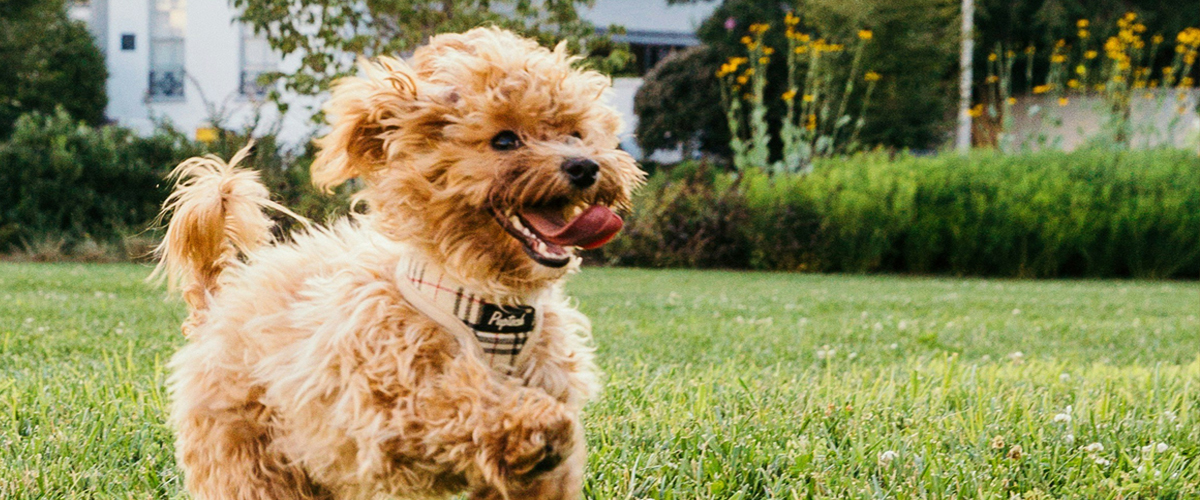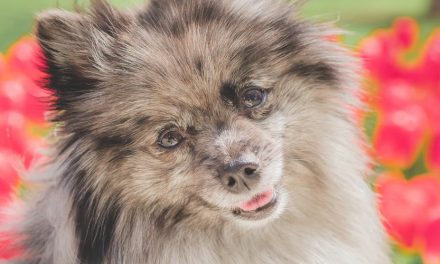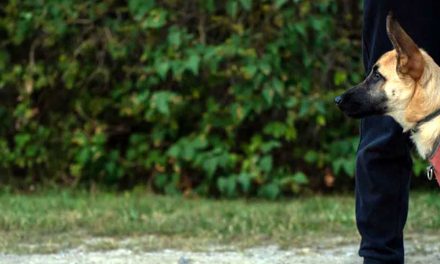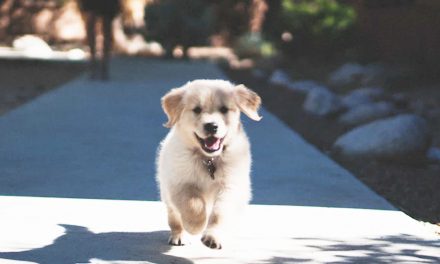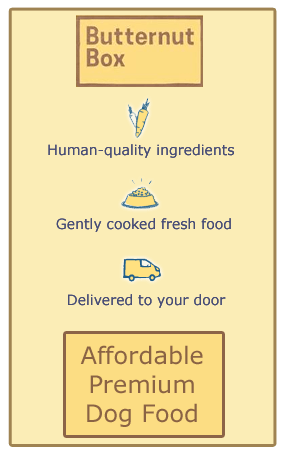Welcoming a new puppy into your life brings an overwhelming dose of joy, fervor, and responsibility. Just like human babies, puppies thrive on care, compassion, and crucially, a good amount of exercise. It’s not just about tiring out those little legs; proper exercise is pivotal in your furry friend’s physical and cognitive development. But how much is too much? Or not enough?
EXERCISING YOUR PUPPY
This ultimate guide will help you tailor a workout regimen that suits your puppy’s needs and sets the foundation for a robust, active lifestyle.
UNDERSTANDING YOUR PUPPY’S EXERCISE REQUIREMENTS
Every dog breed comes with its own set of characteristics, including energy levels and exercise needs. Larger, more robust breeds require longer and more intense exercise to stay healthy, as opposed to toy breeds, which may be content with short but frequent bursts of activity. It’s crucial to research your pup’s breed to get a sense of how to calibrate their daily exercise. But more importantly, observe and understand your individual pup’s cues. Just like humans, every dog has preferences, energy spurts, and times of rest. Here’s a breakdown:
- Toy Breeds: Tiny pals like Chihuahuas and Yorkies still require exercise, but in less intensity. Short walks or indoor play can suffice.
- Medium Breeds: Beagles and Bulldogs typically thrive on moderate exercise. Daily walks and a good game of fetch are usually enough.
- Large Breeds: Think Golden Retrievers and German Shepherds. These guys love long walks, runs, or hikes, and they’re particularly fond of activities that stimulate their minds as well as their bodies.
- Giant Breeds: Breeds like Great Danes and Mastiffs may look like couch potatoes, but they need regular but controlled exercise to support healthy growth and prevent obesity, which can be particularly harmful to their developing bones.
By aligning your puppy’s exercise with their breed and individual traits, you set them up for a lifetime of wellness.
EXERCISE DO’S FOR PUPPIES
Developing a safe and structured exercise routine is not only beneficial for your puppy’s health; it can also be a wonderful bonding experience for both of you. Here are some exercises that are considered pup-friendly:
REGULAR, SUPERVISED PLAYTIME
Engaging in playtime is an excellent way to build a strong relationship with your pup while giving them the exercise they need. Supervised play is essential to ensure they don’t overexert themselves or get into any mischief.
LEASH TRAINING AND WALKS
Introducing the leash and basic walking while they are young will help curb common puppy behavioral issues like pulling on the leash when they grow older. Keep walks short initially and gradually increase the distance as they grow.
OBEDIENCE AND AGILITY TRAINING
Starting early with obedience training can provide mental exercise while teaching your pup helpful commands. Similarly, agility training can be very stimulating and physically challenging for many breeds.
SOCIALIZATION AT A PUPPY LEVEL
Allowing your puppy to safely socialize with other dogs is healthy and encourages natural play. Engage in puppy play dates or safe areas where they can interact with other vaccinated dogs.
INTERACTIVE PLAY WITH TOYS
Toys that require your puppy to think and strategize, like treat-dispensing toys or puzzle feeders, are great for mental stimulation.
EXERCISE DON’TS FOR PUPPIES
Just as there are good exercises for your puppy, there are also exercises that can be harmful:
OVEREXERTION
Puppies are full of energy, but their growing bones and muscles need time to develop and should not be pushed too hard. Avoid any activities that can overstimulate or over-tire your pup, as this can lead to health issues.
HIGH-IMPACT ACTIVITIES
High jumps and intense running on hard surfaces can harm a puppy’s developing joints. Save frisbee and longer runs for when the dog is fully grown.
EXERCISING THEM IN EXTREME WEATHER
Puppies can struggle to regulate their body temperature. Avoid exercising them in extreme heat or cold, and watch out for signs of overheating.
ALLOWING TOO MUCH EXERCISE AFTER MEALS
A full belly and high energy can be a recipe for tummy upsets, bloating, or even more severe health issues. A little bit of play is fine, but too much, especially intense exercise, after meals is not recommended.
SIGNS YOUR PUPPY NEEDS MORE (OR LESS) EXERCISE
Paying attention to your puppy’s body language and behaviors is crucial in determining their exercise needs. Here are some indicators:
SIGNS OF NOT ENOUGH EXERCISE
Boredom and excess energy can lead to destructive behaviors. If your puppy is chewing everything in sight or seems unusually restless, they may need more playtime.
SIGNS OF TOO MUCH EXERCISE
If your pup is becoming lethargic, disinterested in play, or is sore, you may need to reduce exercise. Additionally, lameness or limping are signs of overexertion or possible injury.
ALERTNESS TO PUPPY’S ENERGY CYCLES
Like clockwork, most puppies have predictable bursts of energy followed by periods of rest. Design an exercise plan that complements these natural cycles.
By being mindful of these signs, you can adapt your pup’s exercise routine to best suit their needs.
STRUCTURING PLAY AND REST: THE IDEAL ROUTINE
Consistency is key in establishing a balanced exercise and rest routine for your puppy. Aim to provide multiple, short play sessions throughout the day to mimic their natural energy cycles. For example:
- Early Morning: A quick bathroom break followed by a short play session before breakfast.
- Mid-Morning: This is typically peak play time for puppies. Engage them in at least 15 to 30 minutes of activity.
- Afternoon: Another shorter play session before they take their afternoon nap.
- Evening: An hour or so of exercise and playtime before their evening meal, ensuring they have time to digest before bedtime.
Remember, puppies require significantly more sleep than adult dogs, often up to 18 hours a day. A well-structured routine that incorporates adequate rest will help prevent over-tiredness and create a disciplined lifestyle for your pup.
THE IMPORTANCE OF MENTAL STIMULATION
Physical exercise is just half the battle; mental exercise is equally significant for keeping your puppy’s brain healthy and agile. Puzzles, training, and interactive play are vital in preventing boredom and the behavioral problems that stem from it.
USING THE SENSES
Utilize activities that engage your puppy’s senses, such as scent games or playing with different textures.
LEARNING THROUGH PLAY
Incorporate learning opportunities into playtime by introducing new toys, experiencing different environments, and playing different games.
TRAINING SESSIONS
Regular, short training sessions will not only teach your puppy new skills, but will also keep their mind sharp and engaged.
INTERACTIVE PLAY
Playing with you or other dogs can be both physically and mentally stimulating. It encourages social learning and problem-solving.
By keeping a balance between physical and mental exercises, your puppy’s growing mind and body will be in top shape.
EXERCISING YOUR PUPPY IN DIFFERENT LIFE STAGES
A puppy’s exercise needs will change as they grow. It is important to adjust their workout routine accordingly.
UNDER 3 MONTHS OLD
Puppies in this age bracket require the least amount of exercise due to their developing bodies. Focus on little, non-strenuous activities such as interactive play with humans and suitable toys.
3 TO 6 MONTHS
Begin slowly introducing more activities once your puppy has started to adjust to their surroundings and your training regimen. Regular but short walks and engagement in slightly more physical play are good.
6 TO 12 MONTHS
Now is the time to increase your puppy’s exercise gradually. They can handle more physical activities, but you should still avoid high-impact exercises and prolonged periods of play.
1 YEAR AND OLDER
By the time your puppy reaches their first year, they will have the stamina for more intense walks, runs, and challenging games. However, consult with your veterinarian for specific exercises and duration based on your dog’s breed and health.
MAKING EXERCISING YOUR PUP A PRIORITY
With our increasingly busy lives, it can be a challenge to ensure our pets get the right amount of exercise. However, prioritizing your puppy’s exercise regiment can lead to a healthier and happier life for both you and your furry friend.
SCHEDULING EXERCISE
Plan your puppy’s exercise just as you would any other important daily activity. Making it a scheduled part of your day will ensure it doesn’t get pushed aside.
INCLUDING EXERCISE IN DAILY CHORES
Incorporate physical activity with daily tasks. For example, take your pup for a walk to the mailbox, or use playtime as a break from working or household chores.
FAMILY AND COMMUNITY INVOLVEMENT
Bring the family on walks or have neighbors join with their pets for socializing and playtime. This can make exercising your pup a fun and communal activity.
HIRING ASSISTANCE
If your schedule doesn’t allow for sufficient exercise for your puppy, hiring a dog walker or enrolling them in a doggy day-care can provide the play and social interaction they need.
Prioritizing your pup’s exercise not only assists in their development but also enhances the bond you share. By being observant, tailoring exercises to their needs, and providing a stimulating environment for growth, you are setting your puppy on the path to a joyful, healthy life.
In the whirlwind of puppy-parent responsibilities, remember to enjoy every moment of watching your canine companion grow, learn, and play. After all, the love and the efforts you put into your puppy’s wellness will be reflected in the wag of their tail and the sparkle in their eyes.
Credit: Original Photo by Caleb Fisher on Unsplash

